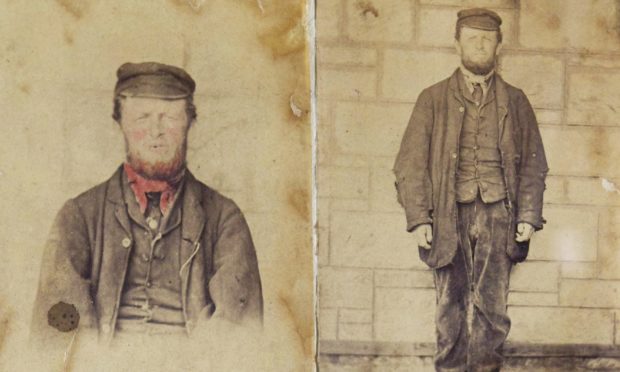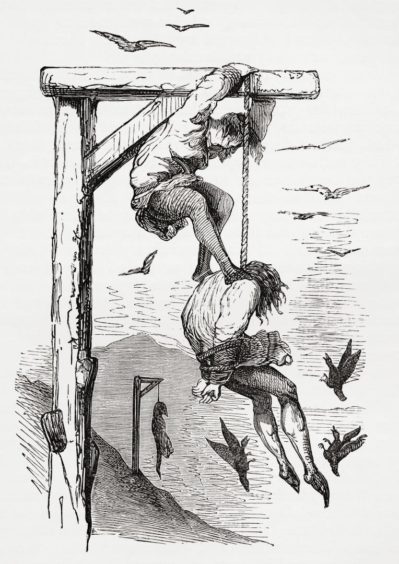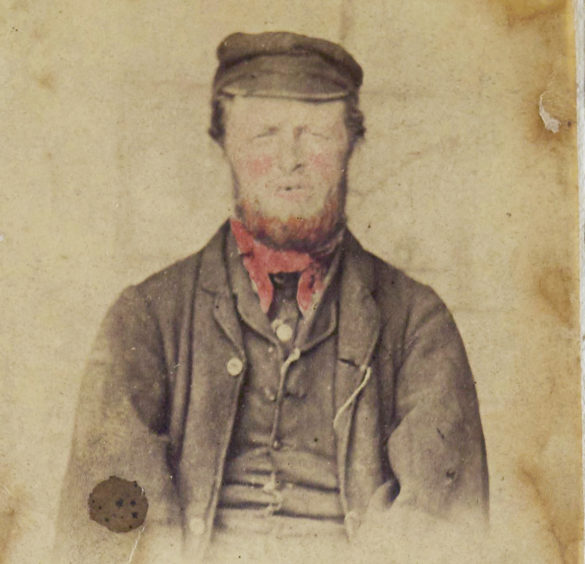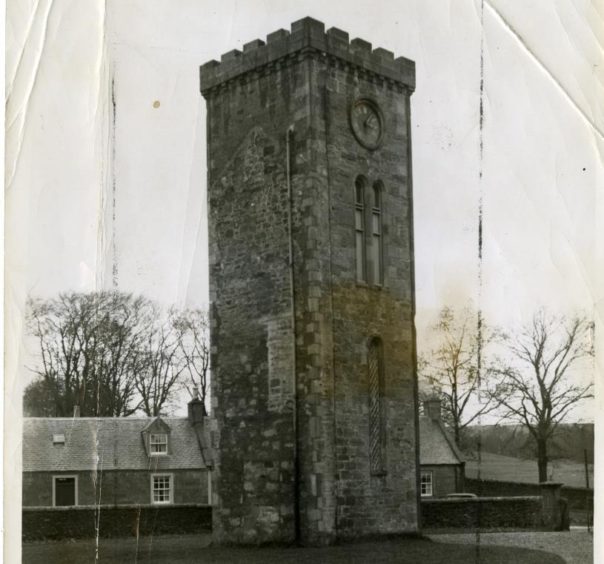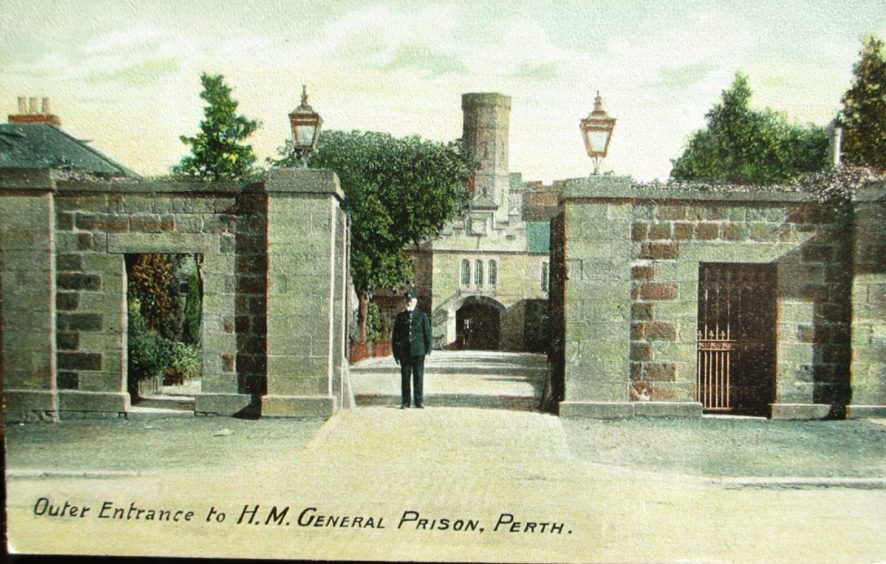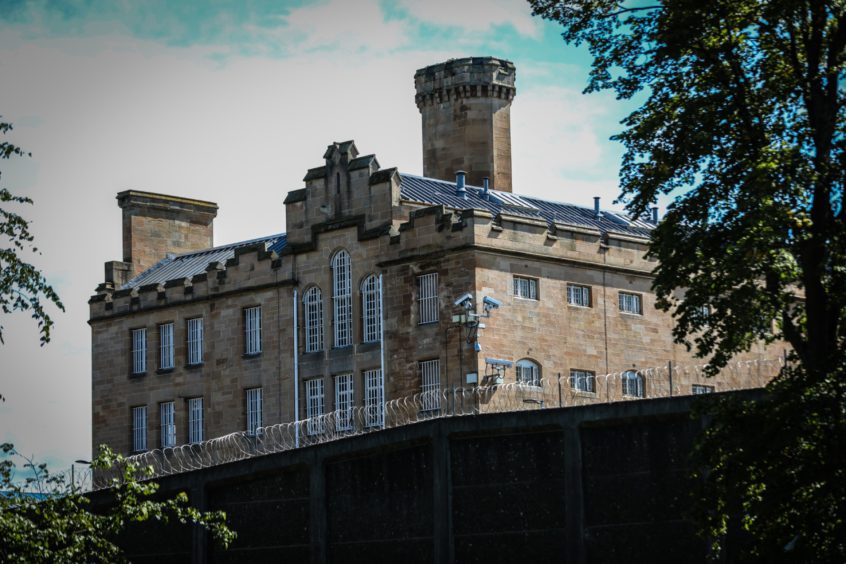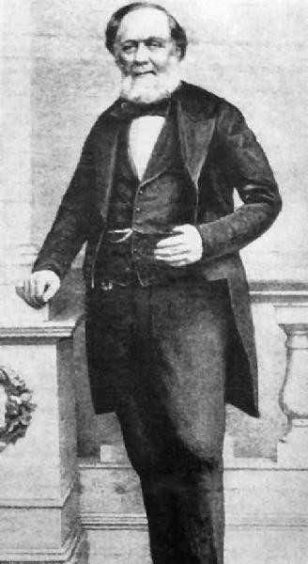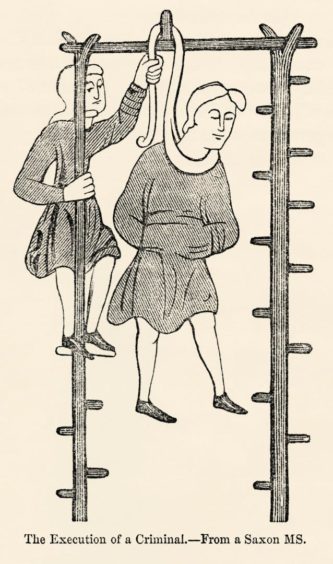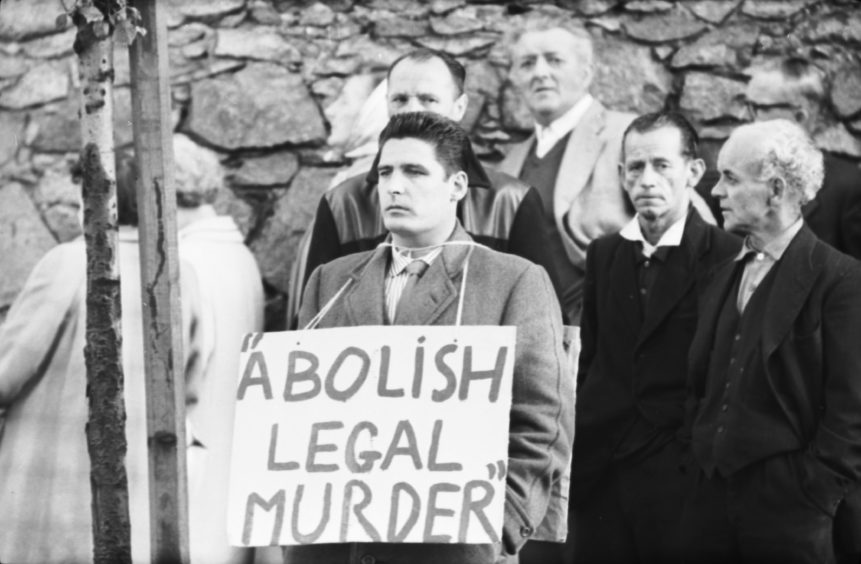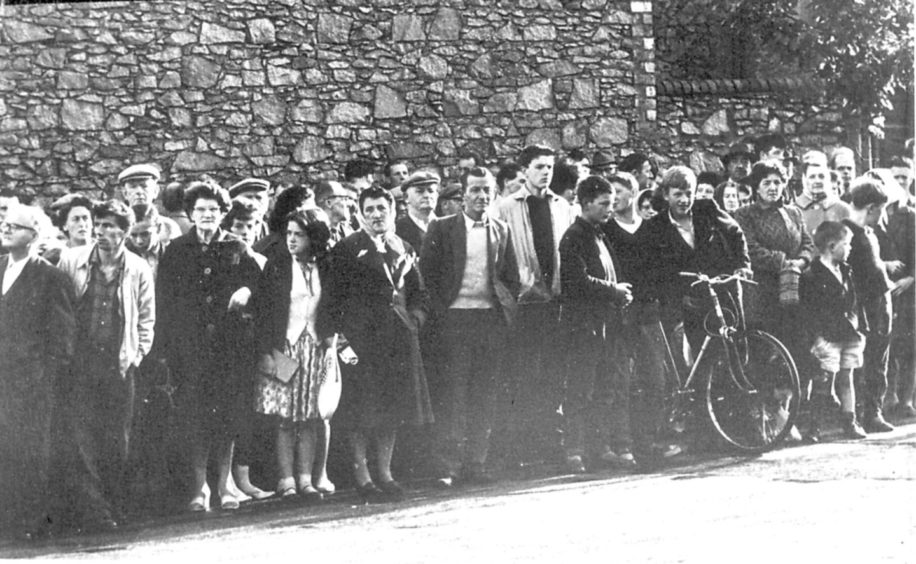It’s 150 years since a red-bearded tramp from Fraserburgh who murdered a tollbooth keeper became the first person to be privately executed in Britain – in Perth Prison. Gayle Ritchie takes up the story.
With his red beard, ruddy complexion, stoop and stammer, George Chalmers wasn’t hard to identify.
The 45-year-old vagrant from Fraserburgh went on the run after bludgeoning tollbooth keeper John Miller to death in his home at Blackhill tollhouse near Braco in Perthshire.
Chalmers had burst through Mr Miller’s unlocked door and smashed the 46-year-old bachelor on the head with a crowbar several times before stripping him and leaving him to die in agony.
He then ransacked Mr Miller’s home, stealing a silver watch, 20 shillings and his far superior clothing, which included a pair of tweed trousers, a shooting coat and a single-breasted vest. He then fled the scene.
Mr Miller was discovered the following day in a pool of blood, with horrific head wounds and the blood-stained crowbar lying next to him.
Chalmers had ditched his own set of rather grubby clothing at the scene of the brutal attack on December 21 1869.
Luckily a local policeman recognised this as having being sported by a tramp who had recently been released from Alloa jail after serving ten days for theft.
A description was circulated for Chalmers which described him as a “native of Aberdeenshire who carried out casual farm work” and being “known for falling foul of the law”.
His mugshot was posted across Perthshire with police having helpfully coloured in his ginger beard and rosy cheeks in a bid to help potential witnesses recognise him.
Their efforts paid off – many people recognised him, in tandem with the description given of his distinctive stoop and stammer – and he was arrested on May 25 1870.
Bizarrely – or perhaps because he was destitute and had no other option – when Chalmers was detained, he was wearing some of the dead man’s clothing.
He strongly denied committing the crime and was paraded through towns and villages in the stolen garb to see if more people recognised him.
Family members were consulted and some claimed Chalmers, who once worked as a whaler and then fell on hard times, singing on the streets for money, had endured a trouble life and suffered from alcohol problems and mental health issues as a result of “sunstroke and brain fever”.
His defence of insanity was rejected and he was found guilty of the murder of Mr Miller and sentenced to be executed at Perth Prison on October 4 1970.
A newspaper report on September 15 1870 stated: “Chalmers as yet has made no confession… he conducts himself in a very quiet but somewhat depressed manner.
“He has a person with him both night and day in the condemned cell but Chalmers is not very free in his conversation.
“He is attended daily by the Rev Archibald Fleming, of St Paul’s Church, Perth, to whose instructions and admonitions the condemned man apparently pays the greatest attention.”
Chalmers maintained his innocence right to the end.
But he was hanged by notorious executioner William Calcraft at 8.08am on October 4 1870 within the walls of Perth Prison, his body obscured from view by a screen.
It was the first private execution ever to take place in Scotland.
Chalmers as yet has made no confession… he conducts himself in a very quiet but somewhat depressed manner.”
Public executions had been abolished in 1868 after the House of Commons decided they were degrading and led to “scandalous and revolting scenes”, with a committee criticising the “lawlessness and brutality” of the baying crowds that gathered to view them.
After the execution, Chalmers was buried in the prison grounds in an unmarked grave.
As well as having the dubious distinction of being the first person in Scotland to be hanged in private under the new regime, Chalmers was also the last person executed in Perth in the 19th century.
Only three more executions took place at the prison, in 1908, 1909, and 1948.
A new purpose built execution shed was completed in 1965.
Known as the Hanging Block, it was never used as the Murder (Abolition of Death Penalty) Act 1965 abolished capital punishment for the crime of murder.
It was subsequently used as offices and a training facility until its demolition in 2006.
The executioner’s tale
William Calcraft was one of Britain’s most prolific executioners – carrying out 450 executions in his 45-year career.
Born near Chelmsford in 1800, he was a cobbler by trade and initially recruited to flog juvenile offenders held in Newgate Prison in London.
While selling meat pies on streets around the prison, Calcraft met the City of London’s hangman, John Foxton.
After Foxton’s death in 1829 the government appointed Calcraft the official Executioner for the City of London and Middlesex.
Thereafter, his services were in great demand across the country.
However, some considered him incompetent and inhumane, due to his controversial use of the “short-drop” hanging technique in which the condemned person was slowly strangled to death; it took several minutes for the condemned to die.
He would sometimes pull theatrically on legs or climb on shoulders in an effort to break a victim’s neck and hasten death.
Critics said Calcraft used these methods partly to entertain the crowds, sometimes numbering 30,000 spectators or more.
In 1868 he carried out the last public and first private executions.
Reporting on Calcraft’s visit to Dundee to perform an execution there on May 1 1873, The Times observed that “if their visitor had been a royal personage, or an eminent statesman he could hardly have been treated with greater consideration”.
The newspaper further reported that Calcraft arrived by train with only one piece of hand luggage, a carpet bag containing “a new rope, a white cap, and some pinioning straps”.
Calcraft left the city without performing any executions – the prisoner, Thomas Scobbie, a murderer from Kingennie who had been condemned to death, was given a reprieve and taken from Dundee Prison to Paisley Jail before word had reached Calcraft.
Red Head Tragedy
Ship’s mate Andrew Brown was sent to the gallows for the axe murder of John Greig while at sea in 1865.
The killing was dubbed the “Red Head Tragedy” after the headland near Arbroath from which the schooner Nymph could be seen when Brown took an axe to his sleeping captain.
Sent to Montrose for the execution, Calcraft arrived to see a large crowd assembled with correspondents noting 2,000 people of the “lowest orders”.
When he was driven to the Eagle Inn in Montrose ahead of the Brown execution, a Courier reporter at the time commented: “Although he is still remarkably healthy, and possesses as firm a nerve as ever, yet age is beginning to tell on him, and his appearance now is very much different from what it was several years ago.”
Brown’s was the third-last public execution in Scotland.
Perth’s Joseph Bell was executed later in the same year, on May 22, having been found guilty of murder.
Two years later Robert Smith was hanged at Dumfries after his conviction for the murder of nine-year-old Thomasina Scott.
Public hangings in Scotland
Some 273 people were publicly hanged in Scotland between 1800 and 1868, comprising 259 men and 14 women.
A further 207 were sentenced to death but reprieved.
Nine people were hanged over stouthrief – a form of robbery taking place in a dwelling.
Three were sent to the gallows for the crime of hamesucken, the seeking out of a person and entering their dwelling with the intention of assaulting them.
After the decision to hold executions behind closed doors in 1868, at least 39 men and three women received the death sentence for murder up to 1899.
Of these, 16 men and one woman were subsequently hanged.
The last man hanged in Scotland was Henry John Burnett. He was executed on August 15 1963 at Craiginches Prison in Aberdeen.
It was the only execution within Craiginches.
